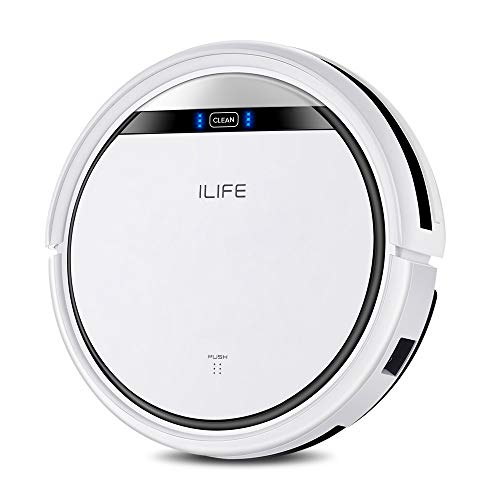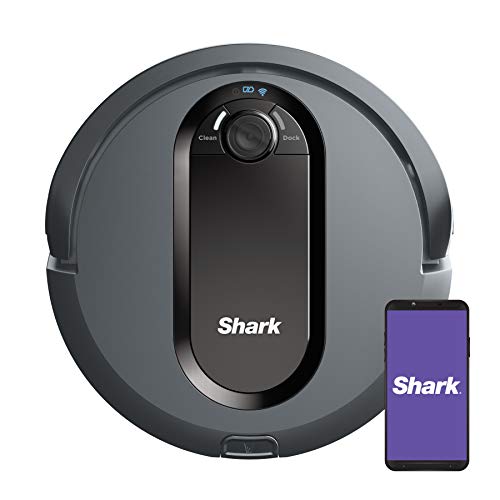10 Facts About Cleaning Robot Mop And Vacuum That Will Instantly Bring…
페이지 정보

본문
 How to Take Care of a Robot Mop and Vacuum
How to Take Care of a Robot Mop and VacuumA robot vacuum and mop will save you lots of time cleaning. But they also require regular maintenance, such as emptying the dirt bins, washing the reusable cleaning pads in accordance with the manufacturer's instructions, or getting rid of them after use and maintaining the sensors clean.
App integration allows you to set schedules and power modes and save maps and alter settings.
1. Empty the Dirt Bin
The majority of robot vacuum cleaners require regular maintenance, which includes emptying dirt bins, washing pads, and keeping track of consumables that need to be replaced. The more you take care of these components, the longer your robot mop and vacuum cleaner will last. Some cleaning robots require a little more care particularly those with water tanks.
Firstly, empty the dirty dustbin completely after each cleaning session. This is among the easiest tasks you can complete, yet it is crucial to the efficient operation of your robot. You should also make sure to clean your filter regularly. Refer to the user's manual to determine the best sweep and mop robot vacuum method and how often you should clean your filters.
While the mopping function on your robot can remove a lot of dust from your flooring, there are a number of small particles that can accumulate in cracks and gaps in flooring. These include hair and dandruff particles, mites and dirt, as well as pet hair. To keep these particles from causing health problems it is crucial to occasionally use a vacuum cleaner or sweeping robot to clean these areas.
If you intend to use your robot to mop it is important to choose a model that comes with top-of-the-line equipment and large dust and water tanks. LEGEE is one of the biggest dust bins as well as a water tank among its competitors. This means that you don't need to stop cleaning to refill the tank.
Do not pour vinegar or floor cleaners into the tank that holds water for your robot mop vacuum robot, unless you have been instructed to do this by its manufacturer. These substances can damage the robot and invalidate the warranty.
A robot mop and vacuum is an excellent tool to free up time, so you can spend it on other important things such as your family or your work. However, some stains and dirt can be too stubborn for your robot to handle. It is also recommended to use a traditional vacuum to clean the areas that your robot can't reach.
2. Clean the Cleaning Pads
Depending on how you make use of your robot mop, the pads can be stained or dirty. This is why it's crucial to clean the cleaning pads regularly. You can wash them at home or in the washing machine along with your regular laundry. Avoid using fabric softeners and dryer sheets as they will reduce the absorbency of the pad and cause it to fail.
If your mop is also an air cleaner, you will need to empty and clean its dust bin on a regular basis. This is also true for hybrid models that sweep and vacuum with a dry mop pad. Many robot robo mops come with brush attachments that require to be washed.
It is important to rinse the mop pads well to remove any dirt and grime. You can also soak the pads in warm water for a few minutes to loosen any dirt that's stuck. Once they're clean, let the pads air dry or place them in the dryer on an extremely low temperature setting. It's recommended to wash the pads every 2-3 months.
During the cleaning process the mop or vacuum can often pick up small items that can cause damage to your robot's sensors and other components. To prevent this from happening, you'll need periodically wipe the sensors with a clean microfiber cloth. This will make it easier for the robot to see its route around the room without hitting furniture and walls.
The majority of robot vacuums and mops come with sensors on their base that detect obstacles and ensure that the machine doesn't get stuck in tight spaces. They can become blocked with dust and other particles and you'll need to keep them clean regularly.
Some robot vacuums have a self-cleaning cycle that you can run following every use. You can check the website of the manufacturer to determine whether this feature is available for your particular model. It typically takes about two or three minutes to complete this particular cycle. It is accessible through an app or a button on the robot itself. A cleaning robot vacuum and mop must be running this routinely to help maintain the performance of its sensors and other parts.
3. Clean the Charging Station
Most robot vacuum deals mops spray water or cleaning solution directly onto the floor in order to remove stains. They then scrub them using scrub pad. Some robot mops use disposable mop pad, while others can be washed and reused. If you decide to use disposable or reusable mop pads, it is important to empty and wash them after each cleaning session according to the instructions provided by the manufacturer. It is also important to drain and let the docking station or mop base dry between uses to prevent mildew.
Robot mops, like vacuum cleaners, require regular maintenance to ensure that they function smoothly. The maintenance tasks include emptying the dust bin cleaning the pads, and, occasionally, cleaning the sensors. If your robot mop is equipped with a dirt detector it may be necessary to clean it every few cycles to remove dust. This could hinder the sensors, causing problems with navigation.
Many robot mop models come with an app that allows you to save maps of your house and create cleaning schedules and monitor when the machine needs maintenance. If you're looking to purchase a mop, ensure that it is connected to Wi-Fi. This will allow you to access the app from any location.
The Samsung Powerbot Vac + Mop is a highly rated model that is equipped with smart features to help it clean the floors without you being home. The map function lets you to create virtual boundaries and no-go zones for the robot. You can also use it to manually direct it to clean an area of the room. Its vacuuming and mopping capabilities are able to work on carpeting and hard floors, making this an ideal choice for homes with both.
Other smart features on this robot that is 2-in-1 include an object avoidance sensor that assists it navigate between furniture and other objects and self-emptying garbage bins that reduce the amount of clean-up needed after every use. It is programmed to run when you are away which is great for busy homeowners. It's also quieter than other vacuums. This is great for parents or pets that are sensitive to noise.
4. Clean the Sensors
Most robot vacuums and some mop-and-vacuum models come with an app that lets you create automated cleaning schedules, set cleaning modes and monitor when the device requires maintenance. You can also utilize the app to begin cleaning, stop, and manually clean your robot from anyplace within your home, and also alter the settings of it.
The app is especially helpful for robotic cleaners with mapping features, like lasers, cameras or optical dToF that allow it to save a virtual map of the room as well as navigate around furniture. These features can cut down on the chance of staining recurring on your floor and make your cleaning chores less time-consuming.
If the mapping sensor of your robot is dirty, it will have difficulty navigating around your home. It's important to clean the sensors on a regular basis like you would an iPhone or camera lens screen. The best robot mop combo method to do this is using a clean, dry cloth. If you use a moist or damp cloth or cleaner you may damage the sensors which could cause them to malfunction.
It's also an ideal idea to clean the brushes on your robot vacuum regularly. This will prevent hair tangles from developing and blocking the motor, and make it easier for your robot to remove particles. It's also a good idea to wipe off the primary brush roll because it's responsible for removing dirt and can accumulate a lot of dust over time.
 The last thing to remember is to only use cleaners recommended by the robot's manufacturer. Other floor cleaners can damage your robot and could void the warranty. Most brands recommend a mix of vinegar and water or a cleaning solution that has been formulated specifically for their robot. Never use hot water or abrasive solutions, as these can damage the internal components of your robot cleaner and leave a mess on your floor. Check out the owner's manual for specific instructions on how to clean your robot cleaner. This will ensure that it functions properly and lasts longer.
The last thing to remember is to only use cleaners recommended by the robot's manufacturer. Other floor cleaners can damage your robot and could void the warranty. Most brands recommend a mix of vinegar and water or a cleaning solution that has been formulated specifically for their robot. Never use hot water or abrasive solutions, as these can damage the internal components of your robot cleaner and leave a mess on your floor. Check out the owner's manual for specific instructions on how to clean your robot cleaner. This will ensure that it functions properly and lasts longer.- 이전글This Is The Good And Bad About Pushchair Pram 24.09.03
- 다음글Five Killer Quora Answers On Repair Bifold Door Top Roller 24.09.03
댓글목록
등록된 댓글이 없습니다.